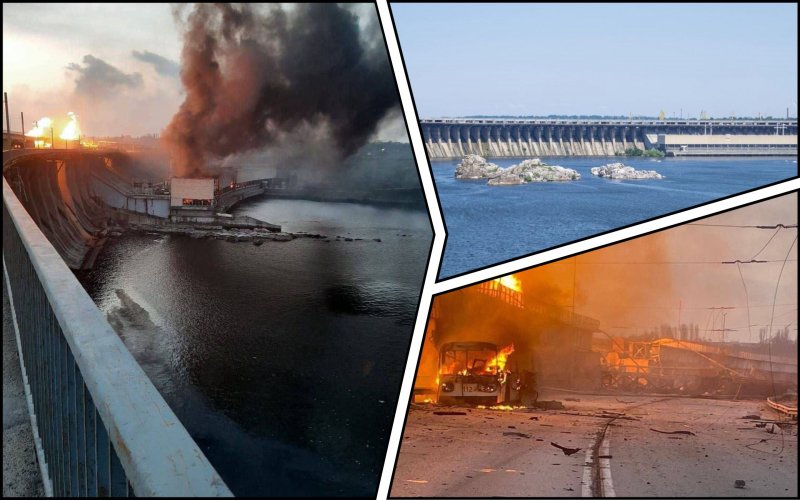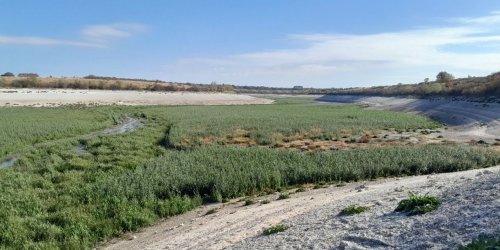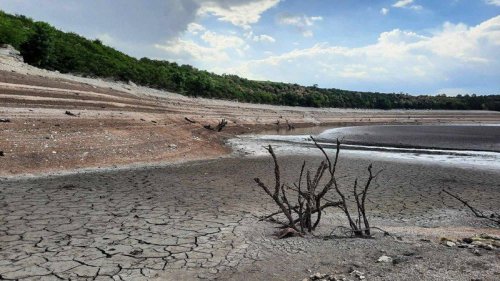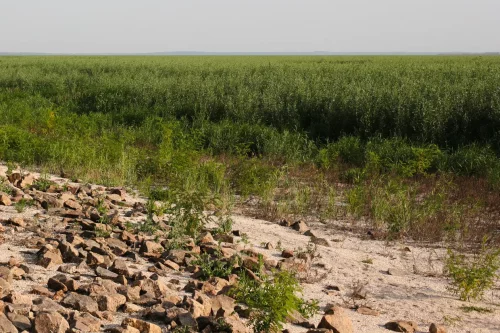On the morning of Friday, March 22, Russian troops carried out the most massive attack on Ukraine's power grid in recent times, including shelling the Dnipro hydroelectric power plant in Zaporizhzhia.
This could have created a new environmental disaster, but there is no threat of a breakthrough, the press service of Ukrhydroenergo reports on Telegram.
"The largest hydroelectric power plant in Ukraine, DniproHES in Zaporizhzhia, was hit. The inhumans did not calm down after destroying the Kakhovka HPP and are now trying to create a new environmental disaster by cynically attacking the Dnipro HPP and the dam," the statement said.
As a result of the attack, a fire broke out at the station. The consequences of the shelling are being eliminated by emergency services and energy workers. The situation at the dam is under control.
The press service of Energoatom said that the shelling damaged the external overhead line that supplies the occupied Zaporizhzhia NPP. Now the plant is powered by only one line, which was recently repaired by Ukrainian power engineers.
"This situation is extremely dangerous and threatens to cause an emergency. If the last line of communication with the national power grid is disconnected, ZNPP will be in another blackout, which is a serious violation of the conditions for the safe operation of the plant," said Energoatom CEO Petro Kotin.
It is noted that since the beginning of the Russian occupation, Zaporizhzhia NPP has already experienced eight full blackouts and one partial blackout with the launch of emergency diesel generators and safety systems. In case of their failure, it threatens to develop a nuclear and radiation accident.
Energy Minister Herman Halushchenko said that the enemy planned to cause a large-scale failure in the country's power system. There have been hits and damage to generation facilities, transmission and distribution systems in various regions. This caused power outages in a number of regions. Power engineers are already working to restore power supply.
According to Babel, the Russians also:
- hit energy facilities in Kharkiv 15 times and damaged critical infrastructure. The city is almost completely without electricity, and there are interruptions in water supply;
- damaged infrastructure and residential buildings in Khmelnytskyi and an energy infrastructure facility in Lviv region;
- critical infrastructure facilities were shelled in Ivano-Frankivsk and Vinnytsia regions.
It is noted that as a result of the shelling, emergency shutdown schedules were also introduced in Poltava, Sumy, and Dnipro regions.
According to the head of the Lviv regional state administration, Maksym Kozytskyi, a fire broke out in the Zolochiv district. According to preliminary information, it was caused by the wreckage of a Shahed drone shot down by air defense forces.
The press service of the Ukrainian Air Force reported that the Russians fired 151 missiles and a kamikaze drone at Ukraine overnight. Air defense forces shot down 55 "shaheds" and 37 missiles.
Earlier, EcoPolitic wrote, that a study by scientists from the British Center for Ecology and Hydrology (UKCEH) and HR Wallingford of the consequences of the Russians' undermining of the Kakhovka hydroelectric dam in June 2023 revealed huge threats to the environment and biodiversity.
As EcoPolitics previously reported, Kharkiv began replacing the soil contaminated with oil products after the enemy shelling of the oil depot on February 9. The shelling caused about 3 thousand tons of oil products to flow into the rivers.





